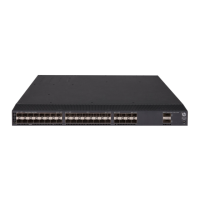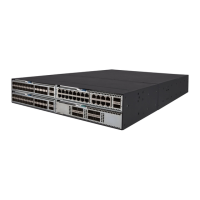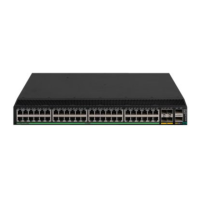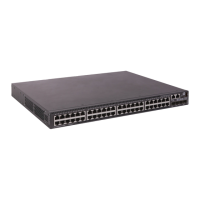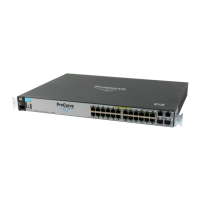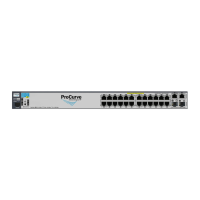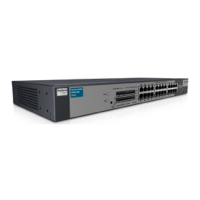28
configuring RIPng process-to-IPv6 VPN instance bindings on a MCE, you allow routes of different
VPNs to be exchanged between the MCE and the sites through different RIPng processes, ensuring
the separation and security of IPv6 VPN routes.
For more information about RIPng, see Layer 3—IP Routing Configuration Guide.
To configure RIPng between an MCE and a VPN site:
Step Command Remarks
1. Enter system view.
system-view
N/A
2. Create a RIPng process for a
VPN instance and enter
RIPng view.
ripng
[ process-id ]
vpn-instance
vpn-instance-name
Perform this configuration on the
MCE. On a VPN site, configure
normal RIPng.
3. Redistribute remote site
routes advertised by the PE.
import-route
protocol
[ process-id
] [
allow-ibgp
] [
cost
cost
]
By default, no routes are
redistributed into RIPng.
4. (Optional.) Configure the
default cost value for the
redistributed routes.
default cost
value
The default value is 0.
5. Return to system view.
quit
N/A
6. Enter interface view.
interface
interface-type
interface-number
N/A
7. Enable RIPng on the
interface.
ripng
process-id
enable
By default, RIPng is disabled.
Configuring OSPFv3 between an MCE and a VPN site
An OSPFv3 process belongs to the public network or a single IPv6 VPN instance. If you create an
OSPFv3 process without binding it to an IPv6 VPN instance, the process belongs to the public
network.
By configuring OSPFv3 process-to-IPv6 VPN instance bindings on a MCE, you allow routes of
different IPv6 VPNs to be exchanged between the MCE and the sites through different OSPFv3
processes, ensuring the separation and security of IPv6 VPN routes.
For more information about OSPFv3, see Layer 3—IP Routing Configuration Guide.
To configure OSPFv3 between an MCE and a VPN site:
Step Command Remarks
1. Enter system view.
system-view
N/A
2. Create an OSPFv3 process
for a VPN instance and enter
OSPFv3 view.
ospfv3
[ process-id |
vpn-instance
vpn-instance-name ] *
Perform this configuration on the
MCE. On a VPN site, configure
common OSPFv3.
Deleting a VPN instance also
deletes all related OSPFv3
processes.
3. Set the router ID.
router-id
router-id
N/A
4. (Optional.) Configure an
OSPFv3 domain ID.
domain-id
{ domain-id
[
secondary
] |
null
}
The default domain ID is 0.
Perform this configuration on the
MCE.
All OSPF processes of the same
VPN must be configured with the
same OSPF domain ID to ensure
correct route advertisement.
